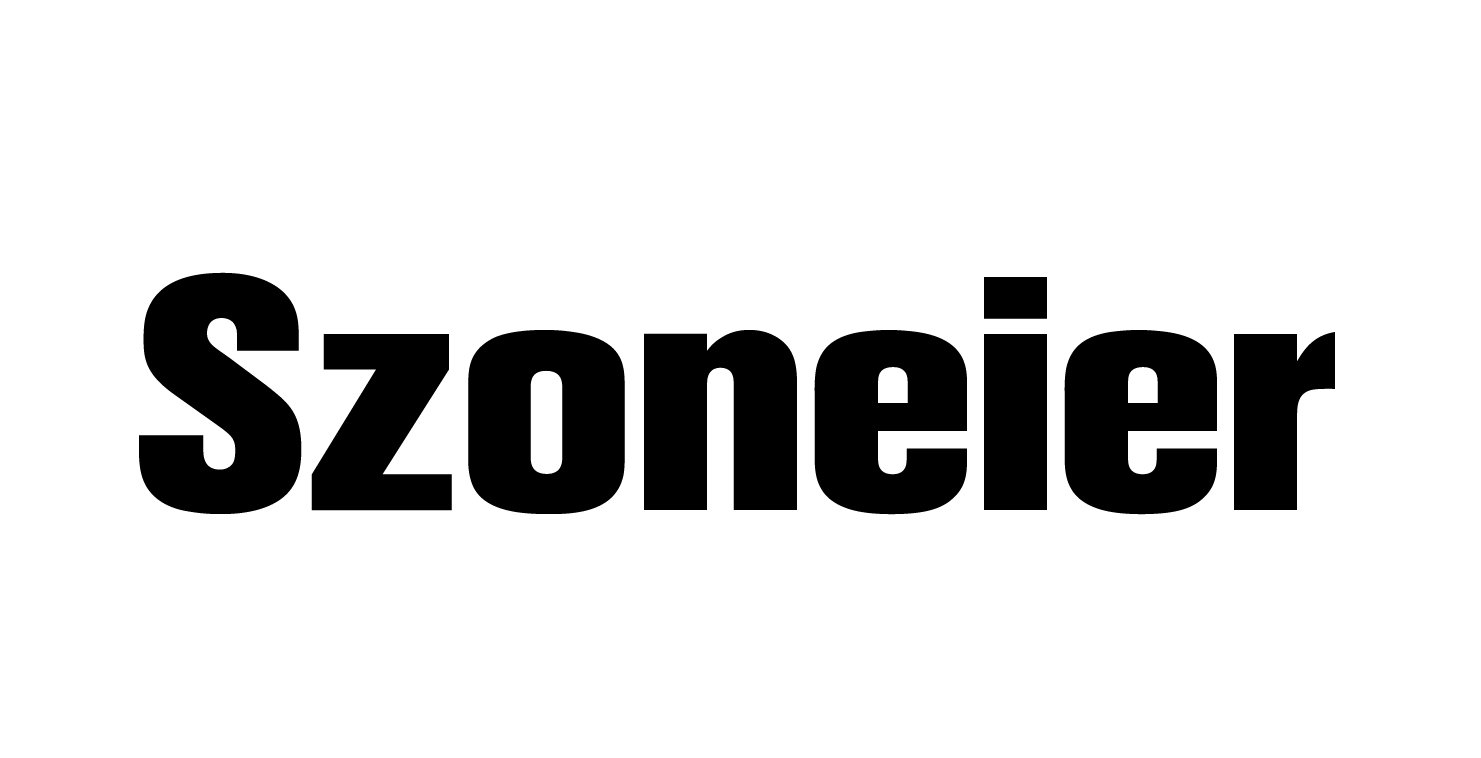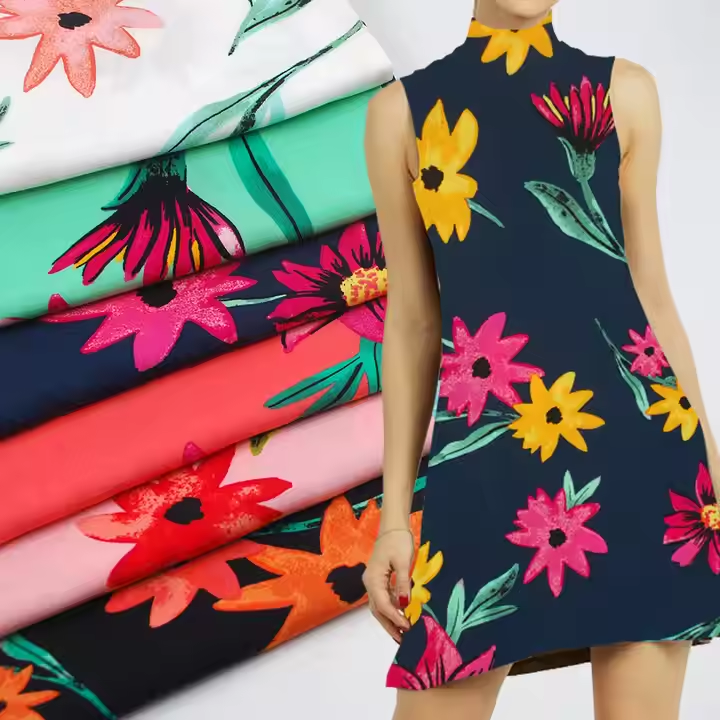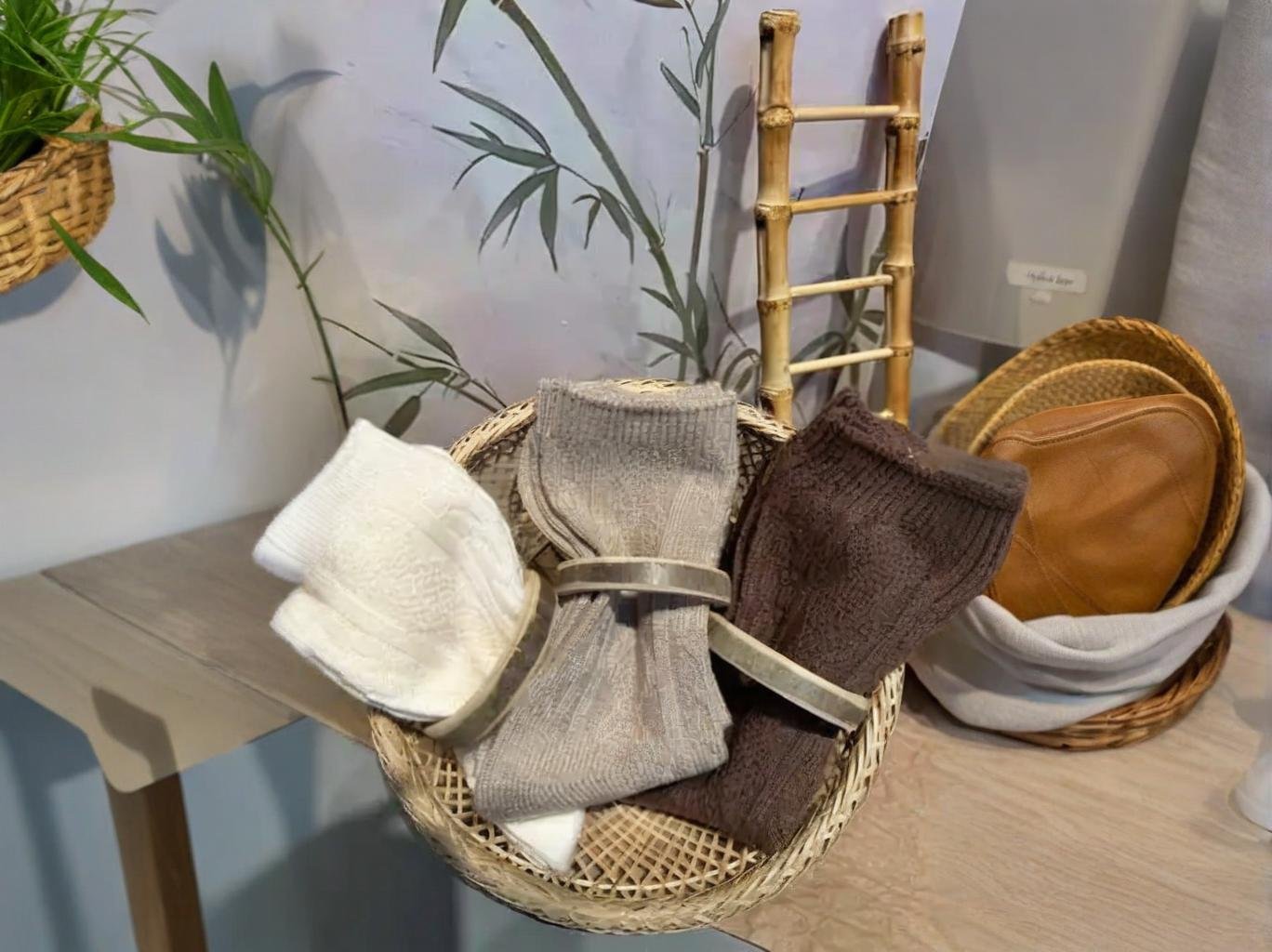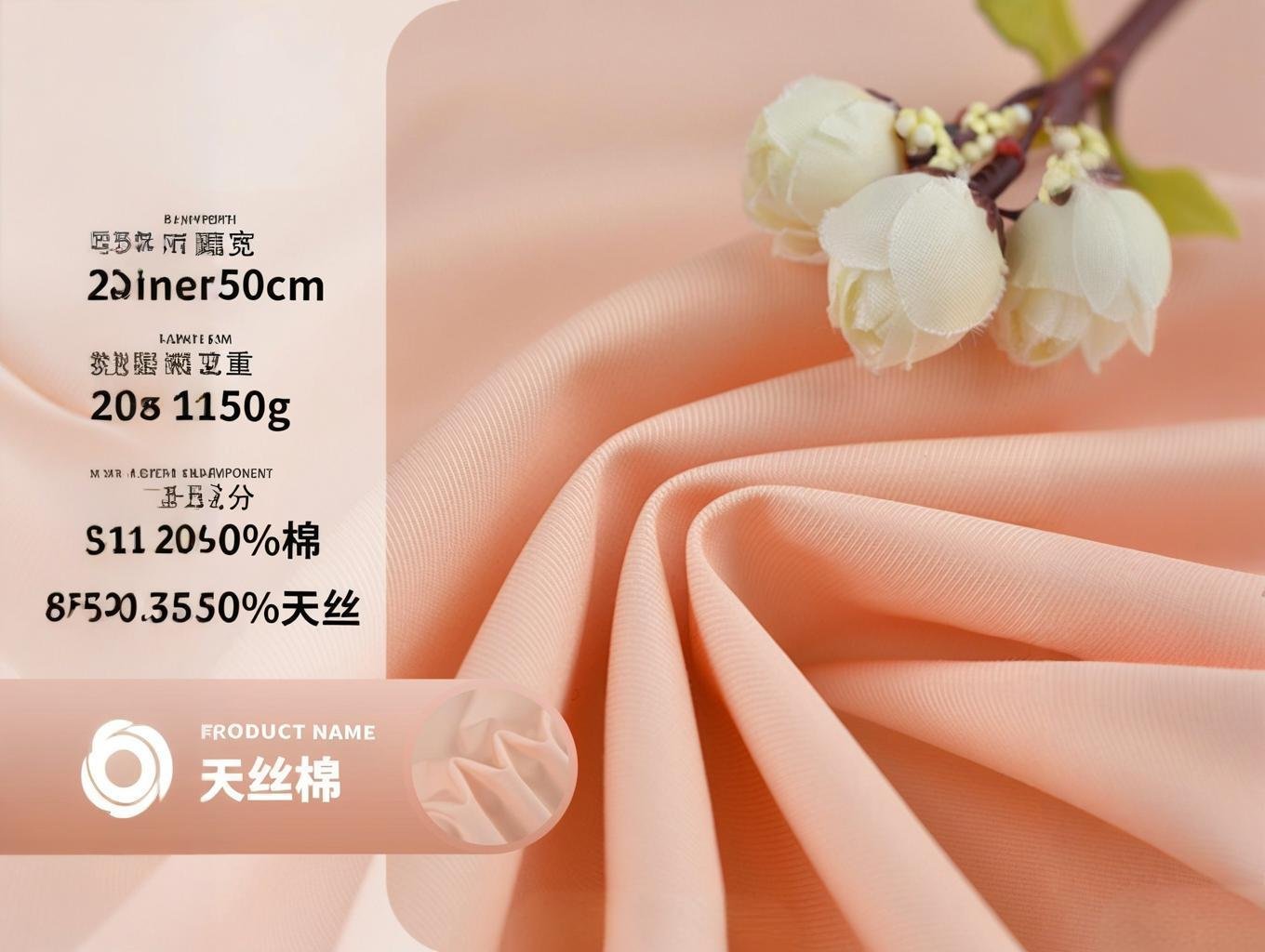What Country Produces The Most Spandex?
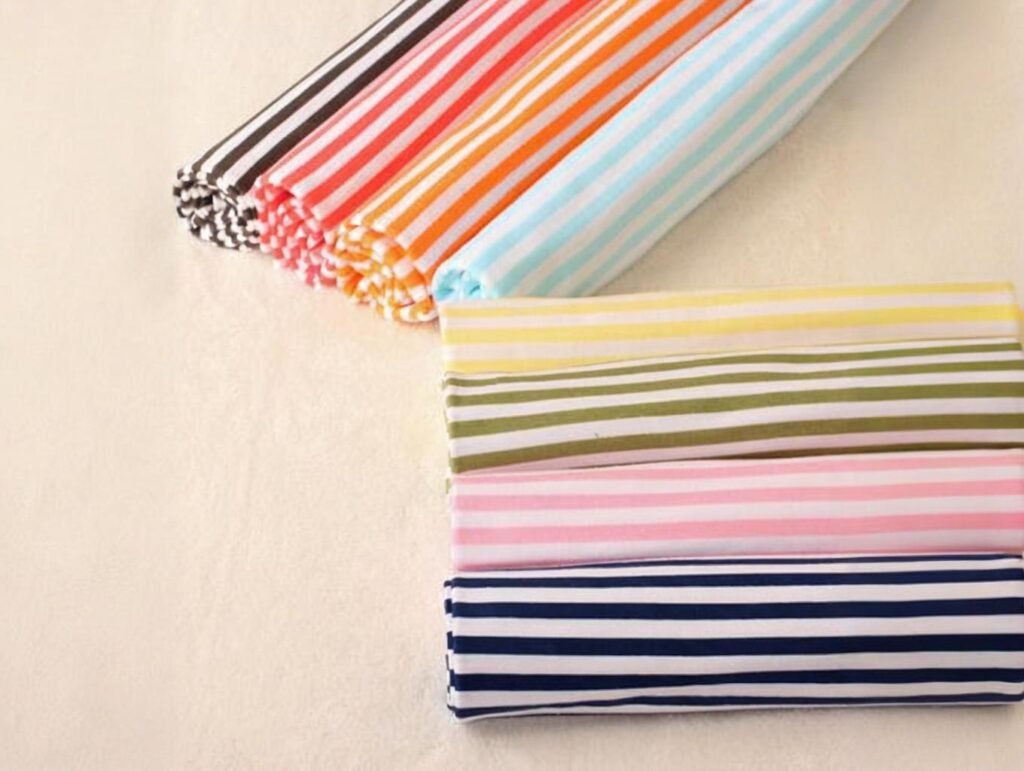
Spandex, also known as elastane, is one of the most critical fabrics in the modern textile world. Its elastic properties and comfort stretch make it a must-have in activewear, underwear, shapewear, swimwear, and even industrial textiles. As global demand for high-performance textiles continues to grow, so does the importance of understanding where and how spandex is produced at scale.
China is the world’s largest spandex producer, contributing over 65% of global supply thanks to its advanced manufacturing infrastructure, strong raw material sourcing, and cost-effective scalability.
This dominance didn’t happen overnight. China’s position is the result of decades of investment in textile technology, aggressive capacity expansion, and vertically integrated supply chains that make it difficult for other countries to compete at the same level. In this article, we’ll take a deeper look into what makes a country a spandex powerhouse, how other nations stack up, and where the market is headed next.
But first, imagine this: You’re a startup sportswear brand preparing your next high-performance yoga line. You source your fabric from a supplier who offers premium spandex at low cost, fast delivery, and consistent quality. Turns out, it’s manufactured in a region you hadn’t even considered a textile leader before. That’s the hidden power of understanding where spandex really comes from—and why it matters for brands of all sizes.
Let’s dive in.
1. Which Country Is the Leading Producer of Spandex?
China is the undisputed leader in global spandex production. It accounts for more than 65% of the world’s spandex output, followed by South Korea, the United States, and Turkey. The reason? China’s enormous domestic market, robust chemical fiber infrastructure, and government-backed industrial zones that support fiber and fabric innovation. China produces the most spandex globally, with over 65% of total output. Its dominance is supported by advanced technology, massive production capacity, and integrated textile supply chains.
Why China Leads in Spandex
1.1. Integrated Supply Chain Advantage Chinese manufacturers often own both the raw material production (PTMEG and MDI) and the final spinning facilities, reducing costs and improving lead time.
| Country | Annual Spandex Capacity (in tons) | Key Manufacturers |
|---|---|---|
| China | 750,000+ | Hyosung (China), Huafon, Xiamen Lilong |
| South Korea | 90,000 | Hyosung TNC |
| United States | 60,000 | Invista (Lycra) |
| Turkey | 35,000 | Korteks, Karsu |
1.2. Government-Backed Industrial Parks Zones like the Fujian and Zhejiang Textile Clusters offer tax incentives and infrastructure subsidies, allowing large-scale operations to flourish.
1.3. Export Efficiency With streamlined port logistics and vast experience in international trade, Chinese suppliers fulfill orders faster and cheaper than most.
1.4. Workforce and Technology China’s textile workforce is highly experienced, and major investments in automation have boosted efficiency and quality in recent years.
2. What Factors Contribute to a Country’s Dominance in Spandex Manufacturing?
Several interconnected elements determine whether a country can excel in spandex production: access to raw materials, cost of labor, technological capability, infrastructure, and regulatory environment. But the most critical factor is supply chain integration—from monomer chemistry to final fabric processing. A country’s dominance in spandex manufacturing depends on supply chain integration, access to PTMEG/MDI, infrastructure, low production cost, and advanced spinning technology.
Key Elements Behind Global Spandex Leadership
2.1. Access to Raw Materials (PTMEG and MDI) Spandex is made from polyether-polyurea copolymers, mainly from PTMEG and MDI. Countries like China and the U.S. have strong domestic chemical industries capable of producing these at scale.
| Country | PTMEG Production Capacity | Key Chemical Suppliers |
|---|---|---|
| China | High | Yantai Wanhua, BASF (China) |
| USA | Medium | Invista |
| South Korea | Medium | Hyosung Chemical |
| India | Low | Reliance, Grasim |
2.2. Cost of Labor and Utilities Spandex is energy-intensive. Nations with low electricity costs (like China and Turkey) hold an edge. Labor costs in Southeast Asia also appeal to brands looking for cost savings—but few have the upstream capability of China.
2.3. Domestic Market Size A larger domestic market provides consistent demand and allows for economies of scale. China’s growing athleisure and sportswear demand keeps its spandex industry thriving.
2.4. Innovation and R\&D South Korea leads in specialty spandex innovations like high-stretch and chlorine-resistant variants, although it produces less volume.
2.5. Trade Policies and Export Readiness China benefits from FTAs and an established export ecosystem that simplifies documentation and logistics.
2.6. Vertical Integration and OEM Flexibility A strong vertically integrated system lets manufacturers handle spinning, dyeing, and weaving in-house, offering better control over cost and quality.
3. How Does China’s Spandex Output Compare to Other Major Producers?
China not only leads the spandex industry in terms of output, but it also outpaces competitors in value-added services like custom formulation, product consistency, and delivery speed. While other countries focus on niche or high-tech spandex variants, China balances volume with innovation and flexibility. China’s spandex production vastly exceeds other countries, with output over 750,000 tons annually. South Korea and the U.S. focus more on specialty fibers and innovation but trail behind in scale.
Comparative Insights on Spandex Output
3.1. Volume vs. Innovation Trade-off
| Country | Annual Output (approx.) | Focus Area |
|---|---|---|
| China | 750,000+ tons | Mass production + customization |
| South Korea | 90,000 tons | High-tech spandex, innovation |
| USA | 60,000 tons | Performance fibers (e.g. Lycra) |
| India | 40,000 tons | Mid-range and budget segment |
| Turkey | 35,000 tons | Regional demand and European exports |
3.2. Case Study: Hyosung vs. Huafon
- Hyosung TNC (South Korea): Known for its “creora” brand, Hyosung specializes in chlorine-resistant and eco-friendly spandex variants used in swimwear and eco-yarns.
- Huafon Group (China): A major player in both raw material and finished spandex production, Huafon focuses on scalability and rapid delivery, supporting fashion brands in need of fast turnaround.
3.3. Technology & R\&D Focus
- China has made strides in digital textile automation and AI-integrated production lines.
- USA’s Invista (Lycra) continues to innovate in athletic and shapewear markets, though its production has shifted partially offshore.
- India and Vietnam focus on price competitiveness and rising domestic demand but lag in proprietary technology.
3.4. Challenges Outside China
Other countries often struggle with:
- Smaller domestic markets
- Limited PTMEG supply
- Higher labor or energy costs
- Reliance on imported machinery or intermediate materials
4. Which Spandex Grades and Applications Are Most Commonly Manufactured by Top Producers?
Spandex is not a one-size-fits-all fiber. It is produced in multiple grades, optimized for different end-use applications such as fashionwear, sportswear, medical textiles, industrial webbing, and more. Top producers typically focus on a combination of standard denier spandex and specialized variants. Top spandex producers manufacture both standard and specialty grades, with key applications including activewear, lingerie, medical compression garments, swimwear, and industrial textiles.
Understanding Spandex Grades and End Uses
4.1. Common Spandex Grades by Denier
| Denier Range | Typical Use | Region with Highest Production |
|---|---|---|
| 20D–40D | Hosiery, seamless underwear, warp knitting | China, South Korea |
| 40D–70D | Activewear, yoga pants, swimwear | China, USA |
| 70D–140D | Denim stretch fabric, workwear | India, Turkey |
| 200D+ | Medical textiles, industrial belts | USA, China |
4.2. Application-Specific Examples
- Fashionwear: Ultra-fine denier spandex used in lingerie and fitted dresses.
- Activewear: 4-way stretch spandex for leggings and sports bras; often blended with nylon or polyester.
- Medical: Compression sleeves and support hosiery use high-denier spandex for pressure control.
- Industrial: Flame-retardant or chemically resistant spandex for protective clothing and webbing.
4.3. Real-World Example: Swimwear Brands
- Leading swimwear brands like Speedo and Arena often source chlorine-resistant spandex from South Korean suppliers such as Hyosung due to their patented technology.
- Fast fashion swimwear brands rely more on cost-efficient Chinese suppliers who can replicate these specs affordably at scale.
4.4. Innovation Spotlight
- Eco-Friendly Spandex: Made from partially bio-based PTMEG or using solvent-free spinning processes.
- Colorfast and Anti-Microbial Spandex: Popular in sportswear and innerwear to reduce dye migration and bacterial odor.
4.5. Global Demand Insights
| Application Segment | Global Demand Share (%) | Growth Trend (2024–2029) |
|---|---|---|
| Activewear | 35% | ↑ Strong growth (fitness boom) |
| Underwear & Lingerie | 25% | → Steady |
| Swimwear | 10% | ↑ Seasonal peaks |
| Medical & Compression | 15% | ↑ Aging population |
| Industrial & Technical | 15% | ↑ Niche demand |
5. What Are the Key Supply Chain and Logistics Considerations in Spandex Production?
Producing spandex is not just about spinning fiber—it’s a complex global operation that depends on raw material availability, chemical processing infrastructure, regional logistics, energy cost, and delivery reliability. Efficient supply chain management is crucial, especially for buyers looking for consistency, lead-time precision, and scalable order fulfillment. Spandex production relies heavily on supply chain integration, including local access to PTMEG and MDI, reliable energy and water supply, skilled labor, and proximity to textile hubs and ports.
What Makes a Spandex Supply Chain Strong?
5.1. Raw Material Proximity
Spandex production starts with key chemicals—PTMEG (polytetramethylene ether glycol) and MDI (methylene diphenyl diisocyanate). Manufacturers closer to chemical plants enjoy faster sourcing and cost savings.
| Region | Major Raw Material Suppliers | Proximity to Spandex Mills |
|---|---|---|
| China (East) | BASF, Wanhua, Sinochem | Very close (same province) |
| USA (South) | Invista, Dow Chemicals | Moderate distance |
| South Korea | OCI, Kumho Petrochemical | Nearby |
| India | Reliance Industries, GNFC | Somewhat scattered |
5.2. Water and Power Dependency
Spandex is water- and energy-intensive. Countries with affordable, stable electricity and water management systems reduce risk of supply disruption.
- China’s textile zones like Zhejiang and Guangdong benefit from dedicated industrial utilities.
- Turkey and India face seasonal power outages in some areas, increasing manufacturing volatility.
5.3. Port and Export Readiness
Efficient international logistics is vital. China’s ports (e.g., Shanghai, Ningbo) are world-class, with fast customs clearance and low container costs. This helps shorten lead times for global clients.
5.4. Pandemic & Geopolitical Disruptions
COVID-19 revealed fragilities in global fiber logistics. Many brands now diversify their sourcing across China, Vietnam, and India to reduce dependency on a single region.
5.5. Digital Supply Chain Management
- Smart ERP integration in leading Chinese factories enables real-time order tracking and inventory planning.
- Automation allows for predictive maintenance, minimizing production downtime.
6. How Do Environmental and Regulatory Standards Impact Spandex Manufacturing by Country?
As the global textile industry faces mounting pressure to reduce its environmental footprint, the production of spandex—once seen as highly pollutive—is undergoing major transformation. Countries now face different levels of regulatory scrutiny and eco-certification requirements that affect their competitiveness in global markets. Environmental regulations significantly affect spandex production. Countries with stricter policies push for cleaner processes and certifications, while others maintain low-cost production with fewer restrictions.
Green Compliance and Global Production Impact
6.1. Environmental Certifications
Eco-conscious brands are demanding OEKO-TEX® and GRS-certified spandex. Producers who invest in cleaner technology and water recycling gain preference in premium markets.
| Country | Common Certifications | Adoption Rate |
|---|---|---|
| China | OEKO-TEX®, GRS, Bluesign | High (export-focused) |
| South Korea | Bluesign, Higg Index, ISO 14001 | Very high |
| Turkey | OEKO-TEX®, ISO certifications | Moderate |
| India | OEKO-TEX®, ZDHC | Growing |
| Vietnam | GRS, ZDHC | Low to moderate |
6.2. Cleaner Production Technologies
- Dry spinning vs. wet spinning: Dry spinning emits fewer pollutants; widely adopted in South Korea and top-tier Chinese mills.
- Solvent-free technologies: Hyosung and Invista lead in developing more sustainable chemical processes.
6.3. Regulatory Pressure by Country
| Country | Environmental Regulation Level | Impact on Production |
|---|---|---|
| China | Strict (post-2020 upgrades) | Cleaner, costlier |
| USA | Strict EPA controls | High-tech, expensive |
| India | Less stringent, but evolving | Cost-effective, risks |
| Turkey | Moderate | Balanced |
| Vietnam | Less regulated | Competitive, less green |
6.4. Carbon Emission Considerations
In 2023, global brands began requesting carbon footprint disclosures from textile partners. Countries with renewable-heavy power grids (like Turkey) may gain a future edge.
6.5. Human Element: Labor & Safety Standards
While environmental compliance focuses on pollution, occupational safety and chemical handling standards also matter. South Korean and U.S. manufacturers often score better here, appealing to socially responsible buyers.
6.6. Real-World Example: Lycra’s Bio-Based Spandex
Invista’s Lycra brand launched a bio-derived version of spandex using renewable dextrose, showing how innovation and sustainability can coexist—albeit at higher costs. Chinese firms like Huafon are now developing similar green products to remain globally competitive.
7. Is the Cost of Production the Main Reason for One Country Leading in Spandex?
Cost plays a major role, but it’s only one piece of the puzzle. Countries that lead in spandex production offer more than just low prices—they combine affordability with technological sophistication, logistical strength, skilled labor, and supplier reliability. While cheaper labor may reduce initial costs, long-term efficiency, quality, and scalability often matter more to international brands. Cost is a major factor in spandex leadership, but infrastructure, innovation, and integrated supply chains matter just as much. China’s success comes from balancing all of these.
Breaking Down the True Cost of Spandex
7.1. Cost Components of Spandex Manufacturing
| Component | Cost Share (%) | Notes |
|---|---|---|
| Raw Materials (PTMEG, MDI) | 40–45% | Price fluctuates with crude oil and supply |
| Labor | 15–20% | Lower in Southeast Asia and India |
| Energy and Utilities | 10–15% | Higher in Europe and USA |
| Machinery Depreciation | 5–10% | High for modern automated lines |
| Overhead & Logistics | 15–25% | Depends on factory location and port access |
7.2. Case Study: China vs. India
- China: Higher labor cost than India, but lower logistics and more advanced automation allow faster turnarounds.
- India: Lower production cost per kilogram, but limited vertical integration can delay delivery and reduce consistency.
7.3. Labor Cost Myth
It’s a common misconception that “cheapest wins.” In spandex, material performance is critical. Defective or inconsistent stretch can ruin entire product lines—leading buyers to prefer slightly more expensive but higher-quality sources.
7.4. Automation Reduces Labor Dependence
Factories in China and South Korea invest in AI-powered monitoring, automatic yarn-winding, and robotic packaging systems. These not only cut labor needs but also reduce human error and energy waste.
7.5. Production Scalability and Risk
China’s ability to scale output quickly without major cost increases gives it an edge during global demand surges—like the fitnesswear boom during the COVID pandemic.
7.6. Shipping & Freight Cost Considerations
Even if a manufacturer produces spandex cheaply, high freight costs (especially from landlocked regions) can eat into profit margins. Coastal countries with established ports, like China and Turkey, offer better FOB pricing.
8. What Trends Are Driving the Future of Global Spandex Production?
As the textile world becomes more dynamic, several trends are shaping the future of spandex: sustainability, digitalization, material innovation, regional diversification, and nearshoring. Countries and suppliers that align with these trends are more likely to thrive in the coming decade. Sustainability, digitalization, eco-fibers, and nearshoring are key trends shaping spandex’s future. Countries embracing green tech and innovation will lead the next wave.
Emerging Drivers in the Spandex Landscape
8.1. Sustainability and Bio-Based Spandex
- Hyosung and Invista have developed spandex made from renewable feedstocks like corn-based glucose.
- Huafon and Yantai Tayho in China are piloting solvent-free processes with lower emissions.
| Brand | Sustainable Product Line | Key Benefit |
|---|---|---|
| Lycra EcoMade | Recycled PET-based spandex | Reduced carbon footprint |
| Hyosung Regen | Bio-based PTMEG fibers | USDA Certified Biobased Product |
| Huafon BioX | Solvent-free yarns | Lower VOC emissions, greener process |
8.2. On-Demand Manufacturing & Digital Integration
- AI is being used to optimize spinning conditions in real time.
- Predictive maintenance systems are reducing downtime in major mills.
8.3. Nearshoring & Regional Diversification
- Mexico, Turkey, and Vietnam are gaining interest for regional supply hubs.
- Western brands are moving partial sourcing closer to final garment assembly points to reduce lead times.
8.4. Blended Fiber Innovation
- Spandex blended with modal, recycled polyester, or bamboo viscose offers enhanced breathability and eco-perception.
- Innovation in core-spun spandex is driving lightweight, high-durability fabrics for performance apparel.
8.5. Shifting Market Dynamics
| Region | Growth Trend (2024–2029) | Drivers |
|---|---|---|
| Southeast Asia | ↑↑ | Rising apparel production |
| North America | → | Stable; reshoring initiatives growing |
| Europe | ↑ | Sustainability demand, shorter supply chains |
| Middle East | ↑ | Textile free zones and logistics access |
| Latin America | ↑ | FTA benefits, nearshoring by U.S. brands |
8.6. Future Threats and Opportunities
- Threats: Volatile raw material prices, trade tensions, rising energy costs.
- Opportunities: Green certifications, circular economy models, closed-loop spandex recycling.
Why Understanding Spandex Production Matters
Knowing where spandex comes from—and why—can help businesses make smarter, more resilient sourcing decisions. While China currently leads the global market, competition is heating up, and the next five years may bring a shift driven by sustainability and technology.
At SzoneierFabrics, we understand the complexities of spandex sourcing. Whether you’re seeking standard 40D stretch yarn for athleisure, or eco-conscious specialty blends for premium collections, we provide tailored solutions with full transparency—from fiber sourcing to fabric finishing.
**Interested in custom spandex fabric development or private label manufacturing?**Contact SzoneierFabrics today for free consultation, sample development, and global delivery support. Let’s create your next best-selling textile line together.
Can't find the answers?
No worries, please contact us and we will answer all the questions you have during the whole process of bag customization.
Make A Sample First?
If you have your own artwork, logo design files, or just an idea,please provide details about your project requirements, including preferred fabric, color, and customization options,we’re excited to assist you in bringing your bespoke bag designs to life through our sample production process.
